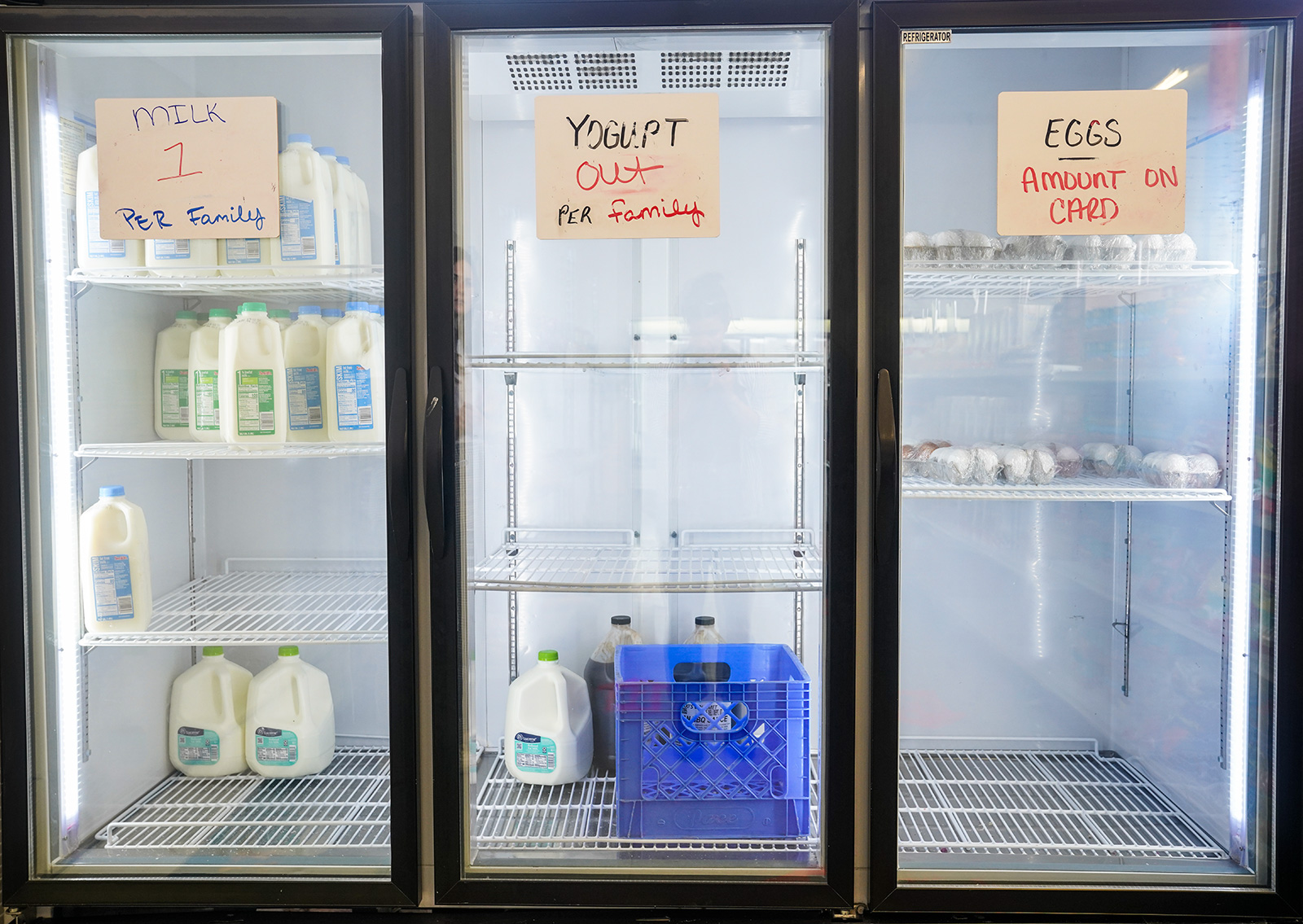Inflation and supply chain shortages are testing the limits of northwest Montana’s food banks.
Across the Flathead, food pantries are facing emptier shelves and scarcer donations as demand for their services grows.
“Our numbers have definitely been increasing,” Ann Bohmer, co-manager of the Columbia Falls Food Bank, said. “[There’s been an] influx of people and a shortage of supplies.”
The problem of overwhelmed and understocked food banks is not unique to northwest Montana. Food and gas prices are skyrocketing across the country, forcing Americans to pinch pennies and limit purchases. As of last month, grocery store prices were up 10.8% from the same time last year. While supermarket tabs are getting higher, lines at food pantries are getting longer, as Americans struggle to put meals on the table.
“Inflation is hurting everybody,” Flathead Food Bank Executive Director Jamie Quinn said. “We’ve seen a decrease in our donations, in our drives, and in our grocery rescue. When there’s less on the shelves, there’s less for us to rescue.”
In a typical year, Kalispell’s Flathead Foodbank receives about one-third of its donations from grocery rescues, where the organization collects food from local supermarkets that would otherwise go to waste. Supply chain issues have left many supermarket shelves bare, however, forcing Quinn and her team to look elsewhere for reliable sources of inventory.
Sophie Albert, executive director of the North Valley Food Bank in Whitefish, has experienced similar difficulties with grocery rescues. On some recent trips to supermarkets, there has been nearly nothing for the food bank to take, she says.
Flathead Food Bank has started purchasing more groceries like milk and yogurt from local stores to ensure its customers have fresh food in their refrigerators. This is an expensive venture, though, which has put pressure on the organization’s cash reserves. The food bank has seen price surges on almost every grocery staple, from a 16% increase on jelly to a 93% increase on macaroni and cheese.
“We can do our best right now, but if things really get bad, how do we compete for the same limited food supply?” Quinn says.
To insulate against inflationary prices and stock up for new customers, Flathead Food Bank has increased its storage capacity for staple items. Quinn says that right now the goal is to buy early and in bulk, knowing “that it’s probably going to get worse.”
Experts are pointing to a number of factors to explain the nationwide phenomenon—inflation pushing up consumer goods prices, the war in Ukraine raising fuel costs, labor shortages breaking down grocery supply chains and COVID-era economic relief programs expiring, leaving millions of families in poverty.
“Food is a lot more than just somebody being able to eat,” Quinn says, stressing the importance of meal stability in everyday life. “You see this trickle effect that once [someone’s] hunger security is threatened, so much more in their life is at risk.”
In 2019, 9.2% of Flathead County residents were considered “food insecure,” a number that has only risen with the onset of the COVID-19 pandemic and accompanying economic downturn.
Even strides to help workers have done little to alleviate the escalating crisis.
Montana’s minimum wage rose 45 cents to $9.20 per hour earlier this year, a development that initially seemed promising for Flathead residents. Quinn says this has only put further pressure on local food banks, though, as higher wages have made many workers ineligible for much needed welfare benefits. The increased wages are still “not livable,” she says, as they have failed to keep up with inflation and skyrocketing housing costs across the Flathead.
Despite efforts by the federal government to limit inflation, economists see the road to market recovery as a long and indefinite one. Until then, the Flathead Valley’s food banks will continue to face a challenging landscape.
Quinn’s disposition remains dedicated and solutions-oriented as she leads her staff into what will likely be a difficult summer for food insecurity in the region.
“We just have to be creative,” she said, looking ahead to the coming weeks. “We’re really looking to the community to help support.”
